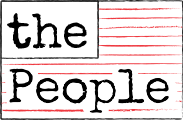Civics U: Policy Plus Administration
There is a plethora of issues facing our country these days that could be addressed in this column. It could be stimulating and helpful to examine such matters as energy, education, immigration, racism, voting security and access, abortion, government mandates, and more. And at this time concerns about the Russian invasion in Ukraine and the U.S.’s response is certainly of critical importance.
However, the original intent of this column was to review and solidify foundational American principles and history that can provide reference points for considering present developments and debates. This article will continue in that vein.
ADMINISTERING POLICY
The legislative branch of government – congress, state legislatures, city councils, county commissions – establishes policies in the form of law and resolutions and by providing funding for specific programs. The executive branch, whether the president, governor, mayor, or manager then administers these policies as well as establishing policies of its own.
However, thinking for now of the President, candidates campaign and are elected mainly on the basis of their positions and proposed policies on issues – not on their administrative skills. But once elected they become the chief administrator over government operations. Even selecting cabinet members, department heads, and Supreme Court justices, constitutes an administrative responsibility. In other words, voters may vote for a candidate because they agree with their position on certain issues and policies without knowing how efficient and effective the government administration might be under the candidate’s leadership and supervision.
While the President does not directly administer and manage the day-to-day operation of departments, citizens are directly affected by the efficiency and effectiveness of the government bureaucracies in delivering services.
In 2020 the federal government employed close to three million employees in 15 departments and over 700 agencies. And, of course, the cost for salaries and benefits does not include the costs of program equipment, materials and activities; and the cost of subsidies and such. The total expenditures by the federal government for fiscal year 2021 were $6.82 trillion. President Joe Biden’s budget proposal for FY 2022 was $6.011 trillion.
A historic issue has been the question of whether the federal government is less efficient than lower levels of government in delivering services to the people, and whether it is an inefficient bureaucracy. One current concern is the difficulty that taxpayers have in contacting the federal Internal Revenue Service. During a typical filing season, the IRS averages two to three million calls each day. A Closer Look: IRS making progress on key areas slowed by the pandemic, but more work remains It cannot begin to answer so many. But, of course, hiring more staff would require more budget funds and taxes. (The IRS had over 75,000 employees and a budget of over $12 billion in 2020.)
So our federal government is a huge operation, and funds not only its own programs but also many state and municipal programs. So the debate about the size and scope of government, and about whether the government is run effectively continues.
BIG GOVERNMENT
What should government do and how much should government do?
The following statements from an article by a U.S. Congressman in The Readers Digest provide an interesting perspective on the role and growth of government:
“….a Congressional subcommittee…has uncovered startling evidence of attempts by federal government officials to make Big Government bigger and to extend, by another vast grant of power, the authority of the State over the lives of all of us.
“….Government employees are back of the campaign to pressure Congress into passing a national compulsory health insurance law…..
“Bills to launch plans of this sort were introduced in each of the last four sessions of Congress….
“Of recent legislative proposals, none has stronger, more obvious appeal to the devotees of the all-powerful, all-supervising State than national compulsory health insurance, often described as ‘socialized medicine.’ Compulsory health insurance – cornerstone of every socialist regime – proposes to solve our health problems not from the community up but from Washington down…..”
What is interesting about this statement is that even though it could have been made in recent years, it was made 75 years ago – in 1947. (Forest A. Harness, Our Most Dangerous Lobby – II, pg. 63, The Readers Digest, December 1947)
The reason for sharing this here is to show that debate about the role and size of government is not new. Debate about the function, authority, and the scope and limit of government is on-going, and it underlies deliberation and debate about many specific government policies, activities and expenditures.

